- The Importance of Pruning Walnut Trees
- 1. Tree Health
- 2. Sunlight Penetration
- 3. Air Circulation
- 4. Disease and Pest Management
- 5. Fruit Production
- 6. Tree Structure and Safety
- Understanding the Walnut Tree
- Growth and Characteristics
- Preferred Growing Conditions
- Uses of Walnut Trees
- Why Pruning is Necessary
- Promoting Growth
- Maintaining Tree Shape
- Preventing Diseases
- When to Prune Walnut Trees
- 1. Winter Pruning
- 2. Late Summer Pruning
- 3. Avoid Pruning in Spring
- The Different Techniques of Walnut Pruning
- 1. Crown Thinning:
- 2. Crown Reduction:
- 3. Scaffold Branch Pruning:
- 4. Deadwood Pruning:
- 5. Formative Pruning:
- 6. Pollarding:
- Proper Tools for Walnut Pruning
- Tips for Pruning a Resistant Walnut Tree
- Common Mistakes to Avoid When Pruning Walnut Trees
- Question-answer:
- Why is it necessary to prune a walnut tree?
- When is the best time to prune a walnut tree?
- Can I prune a walnut tree during summer?
- How much of the tree should be pruned?
- Can I use pruning sealant after pruning a walnut tree?
- Video: When to Prune Walnut Trees
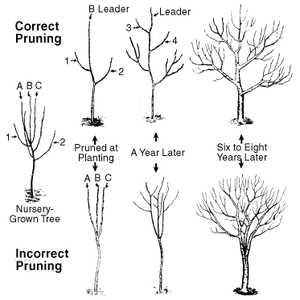
Pruning walnut trees can be a challenging task due to their natural resistance to trimming. However, with the right techniques and knowledge, it is possible to effectively prune walnut trees and promote healthy growth. In this article, we will explore the best methods for pruning walnut trees, including when to prune, what tools to use, and how to maintain the overall health and structure of the tree.
One of the key factors to consider when pruning walnut trees is the timing. It is generally recommended to prune walnut trees during the dormant season, which is in late winter or early spring before the trees start to bud. Pruning during this time allows the tree to heal and recover quickly without risking disease or pest infestation. Additionally, pruning in the dormant season helps to maintain the tree’s natural shape and structure.
When it comes to the tools needed for pruning walnut trees, it is important to use clean and sharp tools to make clean cuts. Pruning shears, loppers, and a pruning saw are commonly used for various pruning tasks. It is crucial to disinfect the tools before and after use to prevent the spread of diseases. It is also advisable to wear protective gear, such as gloves and safety glasses, while pruning to avoid any potential injuries.
Proper pruning techniques for walnut trees involve removing dead or diseased branches, thinning out crowded branches, and shaping the tree for optimal sunlight exposure. It is important to cut just outside the branch collar, the raised area where the branch connects to the trunk. This helps the tree heal properly and reduces the risk of decay.
In conclusion, while pruning walnut trees may pose a challenge due to their resistance to trimming, following the best techniques can ensure effective pruning and promote the overall health and growth of the tree. By pruning during the dormant season, using clean and sharp tools, and adhering to proper pruning techniques, walnut tree owners can maintain the tree’s natural shape and structure, while also preventing the risk of diseases and pests.
The Importance of Pruning Walnut Trees
Pruning plays a crucial role in the growth and overall health of Walnut trees. Proper pruning techniques not only help maintain the tree’s desired shape, but also promote better air circulation and sunlight penetration. In addition, pruning can help manage disease and pest infestations, improve fruit production, and prevent the tree from becoming too dense or overcrowded.
1. Tree Health
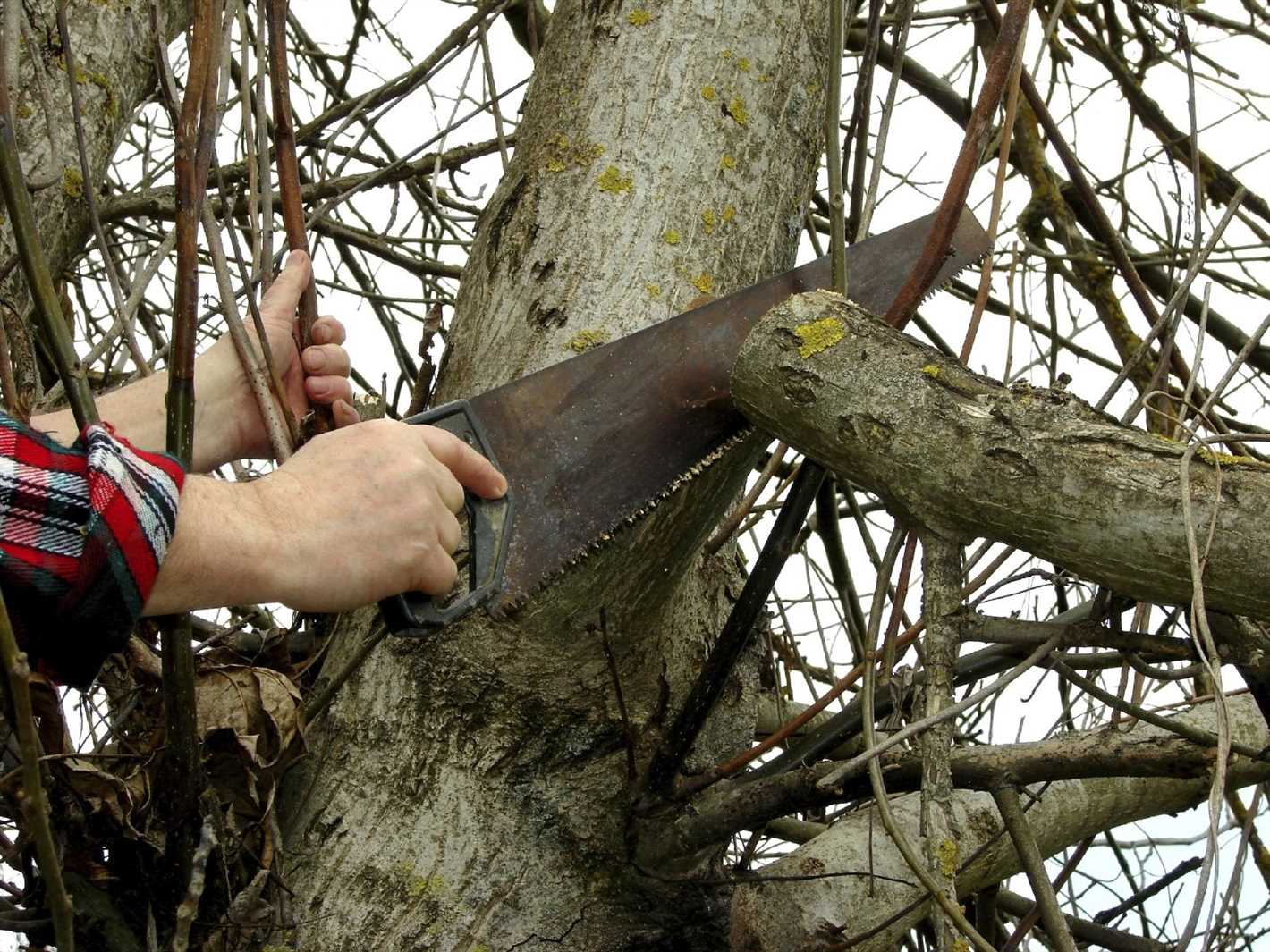

Regular pruning helps remove dead, diseased, or damaged branches, which can be a breeding ground for pests and diseases. By removing these branches, you can prevent the spread of infections and maintain the overall health of your Walnut tree.
2. Sunlight Penetration
Pruning helps open up the canopy of the Walnut tree, allowing sunlight to reach the lower branches and the ground beneath the tree. This is important for the growth and development of lower branches, as they require sufficient sunlight to produce healthy foliage and fruits.
3. Air Circulation
Proper pruning techniques involve thinning out the branches, which improves air circulation within the tree’s canopy. Good air circulation helps reduce the risk of fungal diseases by minimizing the conditions favoring their growth, such as moisture buildup.
4. Disease and Pest Management
Regular pruning can help manage common walnut tree diseases and pests. By removing infected or infested branches, you prevent the spread of diseases and minimize the habitat for pests. Pruning also allows better access for pesticide treatments, making them more effective in controlling pests and diseases.
5. Fruit Production
Pruning helps promote better fruit production in walnut trees. By removing excess branches, the tree can direct its energy and resources towards the remaining branches, resulting in larger, healthier fruits. Additionally, pruning helps maintain a balance between vegetative growth and fruit production, ensuring that the tree continues to bear fruit in future seasons.
6. Tree Structure and Safety
Pruning not only helps shape the tree but also improves its structure and safety. Removing weak or crossing branches reduces the risk of breakage and potential hazards. Proper pruning techniques can help train the tree into a desired form, preventing it from becoming too dense or overcrowded.
In conclusion, pruning walnut trees is essential for their health, productivity, and aesthetics. By following proper pruning techniques, you can ensure that your walnut tree remains healthy, produces abundant fruit, and withstands various challenges such as diseases and pests. Regular pruning will contribute to the overall longevity and success of your walnut tree.
Understanding the Walnut Tree
The walnut tree, scientifically known as Juglans, is a deciduous tree that belongs to the Juglandaceae family. It is native to regions of Asia, North America, and Europe. Walnut trees are known for their large, spreading canopies, which provide shade during hot summer months.
There are several species of walnut trees, including the common walnut (Juglans regia) and the black walnut (Juglans nigra). The common walnut is widely cultivated for its edible nuts, while the black walnut is valued for its dark, hardwood timber.
Growth and Characteristics
- Walnut trees can reach heights of up to 100 feet and have a spread of 70 feet or more.
- They have a deep taproot that enables them to withstand drought conditions.
- The leaves of the walnut tree are compound, with 5 to 25 leaflets that are serrated along the edges.
- The tree produces flowers in the spring, with the male and female flowers on separate trees.
- Walnut trees produce nuts that are enclosed in a hard, green husk.
Preferred Growing Conditions
Walnut trees prefer to grow in well-drained, fertile soil that is slightly acidic. They thrive in areas with full sun exposure, although they can tolerate some shade. The ideal temperature range for walnut trees is between 60°F and 75°F.
- Soil: Walnut trees prefer loamy soil that is rich in organic matter.
- Water: They require regular watering, especially during dry periods.
- Climate: Walnut trees can tolerate a wide range of climatic conditions, but they do best in moderate climates with distinct seasons.
- Pruning: Pruning helps maintain the shape and health of the tree and should be done during the dormant season.
Uses of Walnut Trees
Walnut trees have both economic and ecological importance. Some common uses of walnut trees include:
- Wood: The timber of walnut trees is highly valued for its strength and beauty. It is used to make furniture, cabinets, and flooring.
- Nuts: Walnuts are a nutritious source of omega-3 fatty acids and antioxidants. They are used in cooking and baking, and can also be eaten as a snack.
- Shade and Ornamental Value: Walnut trees provide shade and can be planted as ornamental trees in parks and gardens.
- Wildlife Habitat: The large canopies of walnut trees provide habitat for birds and other wildlife.
- Soil Improvement: Walnut trees have deep roots that help improve soil structure and prevent erosion.
By understanding the characteristics and preferred growing conditions of walnut trees, you can ensure their successful cultivation and maintenance.
Why Pruning is Necessary
Pruning is an essential practice for maintaining the health and appearance of walnut trees. Whether you have a mature walnut tree or a young sapling, regular pruning is necessary to promote growth, maintain the tree’s shape, and prevent diseases.
Promoting Growth
Pruning helps stimulate the growth of walnut trees by removing dead or diseased branches, which allows more energy and nutrients to be directed towards healthy branches and new growth. Trimming also helps to improve airflow and sunlight penetration, ensuring that all parts of the tree receive the necessary resources for optimal growth.
By removing weak or damaged branches, the overall structure of the walnut tree is improved, reducing the risk of limb breakage and increasing its resistance to wind and other environmental factors. This ensures the long-term health and structural integrity of the tree.
Maintaining Tree Shape
Pruning plays a crucial role in maintaining the shape and size of a walnut tree. Regular trimming helps to control the tree’s height and spread, preventing it from overgrowing and becoming unmanageable. This is particularly important if the walnut tree is planted in a smaller space or near buildings or other structures.
By selectively pruning certain branches, you can also shape the tree to have a more desirable form, such as an open center or single leader structure. This not only enhances the tree’s aesthetics but also ensures that sunlight reaches all parts of the tree, promoting balanced growth.
Preventing Diseases
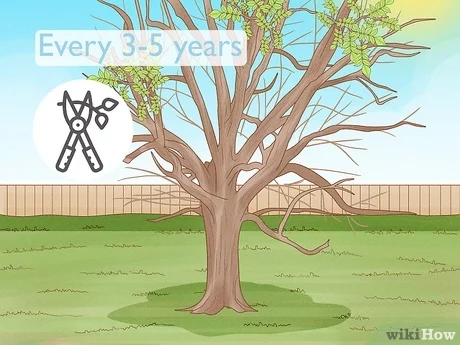

Pruning is an effective way to prevent the spread of diseases in walnut trees. By removing dead or diseased branches, you eliminate potential entry points for pathogens, such as fungi or bacteria. This helps to reduce the risk of infections and ensures the overall health of the tree.
Additionally, pruning allows for better air circulation and sunlight exposure, which can help prevent the growth of fungal diseases that thrive in moist and shaded conditions. Proper pruning techniques, such as making clean cuts and disinfecting tools between cuts, also minimize the risk of introducing pathogens to healthy parts of the tree.
| Benefits | Description |
|---|---|
| Promotes growth | Removes dead or diseased branches, directs energy towards healthy growth |
| Maintains tree shape | Controls height, spread, and improves tree aesthetics |
| Prevents diseases | Removes potential entry points for pathogens, improves air circulation and sunlight exposure |
Overall, pruning is necessary for walnut trees to ensure their health, promote growth, maintain an attractive appearance, and prevent diseases. By following proper pruning techniques and regularly inspecting your tree, you can enjoy a thriving walnut tree in your yard for years to come.
When to Prune Walnut Trees
Knowing when to prune walnut trees is essential for maintaining their health and promoting optimal growth. The timing of pruning can vary depending on the specific needs of the tree, but there are some general guidelines that can help you determine when to prune your walnut tree.
1. Winter Pruning
Winter is generally the best time to prune walnut trees, as they are dormant during this period. Pruning during the dormant season helps to minimize stress on the tree and reduces the risk of disease transmission. It is recommended to prune walnut trees between late fall and early spring, before new growth begins.
2. Late Summer Pruning
Another suitable time for pruning walnut trees is in late summer, after the tree has finished producing walnuts. Pruning during this time allows you to remove any dead, damaged, or diseased branches while also shaping the tree for the following season. Late summer pruning helps to improve air circulation around the tree, reducing the risk of fungal infections.
3. Avoid Pruning in Spring
Avoid pruning walnut trees in spring, especially during bud break and flowering. Pruning during this time can disrupt the tree’s natural growth cycle and negatively impact its overall health. Additionally, pruning in spring increases the risk of disease transmission, as wounds are more susceptible to infection when the tree is actively growing.
It is important to note that the specific timing of pruning may vary based on your location and climate. It is always recommended to consult with a local arborist or horticulturist for guidance on when to prune your walnut trees.
The Different Techniques of Walnut Pruning
Pruning walnut trees is essential for maintaining their health and promoting optimal growth. There are several techniques that can be used to prune a walnut tree, each serving a specific purpose and achieving different results. Here are some of the most common techniques:
1. Crown Thinning:
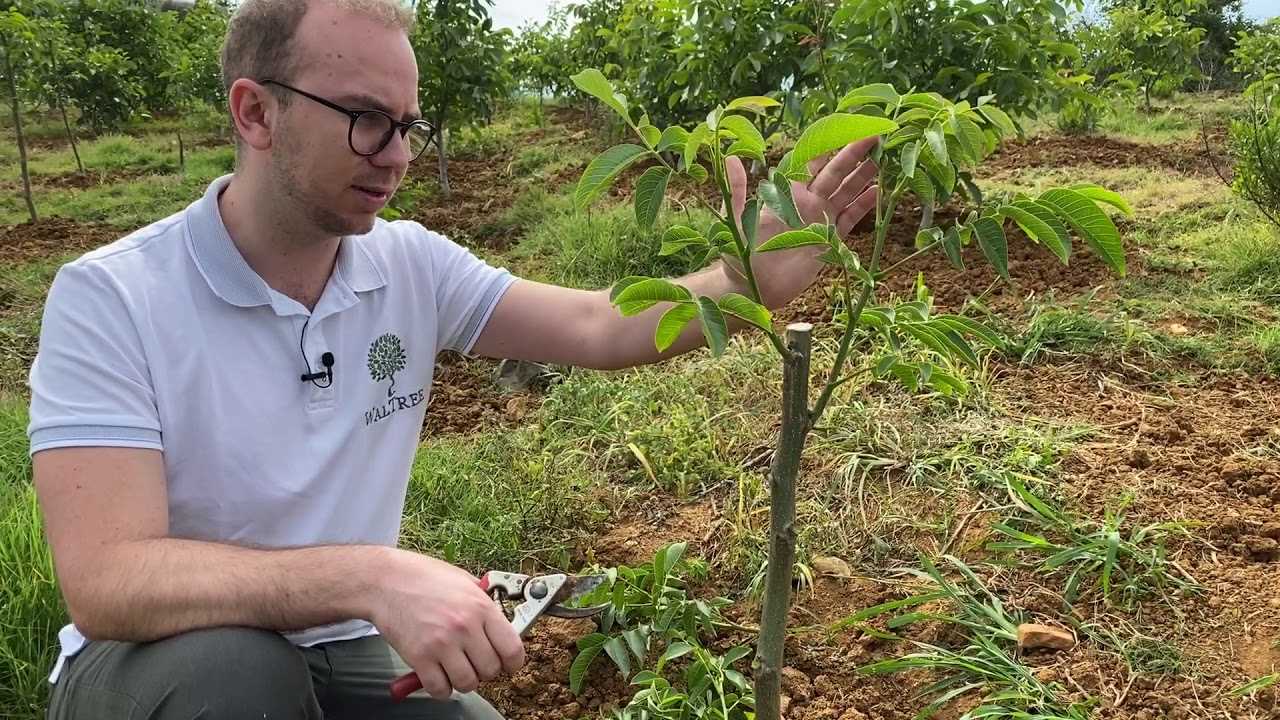

Crown thinning involves selectively removing branches from the outer portion of the tree’s canopy. This technique is used to increase light penetration and air circulation within the tree, which can enhance fruit production and reduce the risk of fungal diseases. When crown thinning a walnut tree, it is important to remove branches that are crossing or rubbing against each other, as well as any dead or diseased branches.
2. Crown Reduction:
Crown reduction is done by removing the upper portion of the tree’s canopy. This technique is often used to reduce the height or spread of a walnut tree, particularly if it is interfering with power lines or structures. When performing crown reduction, it is important to make proper cuts to minimize the risk of disease and to maintain the tree’s natural shape.
3. Scaffold Branch Pruning:
Scaffold branch pruning involves selectively removing branches that are growing at a narrow angle to the trunk. These branches can be weak and prone to splitting, so removing them can help prevent potential damage to the tree. When pruning scaffold branches, it is important to make clean cuts at the branch collar, avoiding leaving stubs that can attract pests and diseases.
4. Deadwood Pruning:
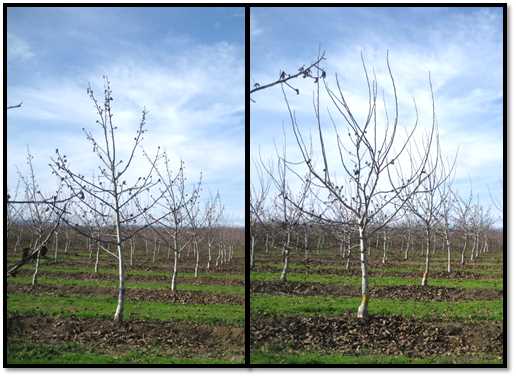

Deadwood pruning entails the removal of dead or dying branches from the tree. Deadwood can be a safety hazard, as it is prone to falling and can cause injury or damage. Regularly removing deadwood also helps to maintain the overall health and appearance of the walnut tree. When performing deadwood pruning, it is important to cut close to the branch collar without damaging the surrounding tissue.
5. Formative Pruning:
Formative pruning is typically done on young walnut trees to establish a desirable shape and structure. This technique involves selectively removing branches to promote a strong and balanced framework. By shaping the tree at a young age, it will be easier to maintain and manage as it matures. When formative pruning, it is important to consider the future growth habits of the walnut tree and avoid severe pruning, which can be detrimental to its long-term health.
6. Pollarding:
Pollarding is a severe pruning technique that involves regularly cutting back the main branches of a walnut tree to a predetermined height. This technique is often used for maintaining trees at a specific size or for producing long, straight shoots for timber. Pollarding should only be done on mature trees, as it can be stressful and may weaken a young tree.
Overall, walnut pruning should be done with care and consideration for the tree’s health and future growth. It is recommended to consult with a professional arborist or horticulturist to determine the best pruning techniques for your specific walnut tree.
Proper Tools for Walnut Pruning
Pruning walnut trees requires the use of proper tools to ensure the health and productivity of the tree. Here are some essential tools you’ll need:
- Hand Pruners: Also known as secateurs, hand pruners are essential for making precise cuts on smaller branches. Look for pruners with a sharp, bypass blade for clean cuts.
- Loppers: Loppers are used for pruning thicker branches that are out of reach for hand pruners. They have long handles and a sharp bypass or anvil blade. Choose loppers with a gear mechanism for increased cutting power.
- Pole Pruners: Pole pruners are ideal for reaching high branches without the use of a ladder. They consist of a long pole with a cutting head at the end. Look for pole pruners with a sturdy construction and a sharp cutting blade.
- Pruning Saw: A pruning saw is necessary for cutting larger branches that cannot be pruned with hand pruners or loppers. Look for a pruning saw with a curved blade and sharp teeth for efficient cutting.
- Nylon Ropes: Nylon ropes are useful for securing branches and making controlled cuts. They can be used to lower branches safely to the ground and prevent damage to the tree.
- Gloves: Protect your hands with a pair of sturdy gloves while pruning walnut trees. Choose gloves that offer good grip and protection against thorns and sharp branches.
- Ladder: In some cases, a ladder may be needed to reach higher branches for pruning. Make sure the ladder is stable and secure before ascending.
Remember to clean and disinfect your pruning tools before and after each use to prevent the spread of diseases. Using the proper tools and techniques will help you maintain a healthy and productive walnut tree.
Tips for Pruning a Resistant Walnut Tree
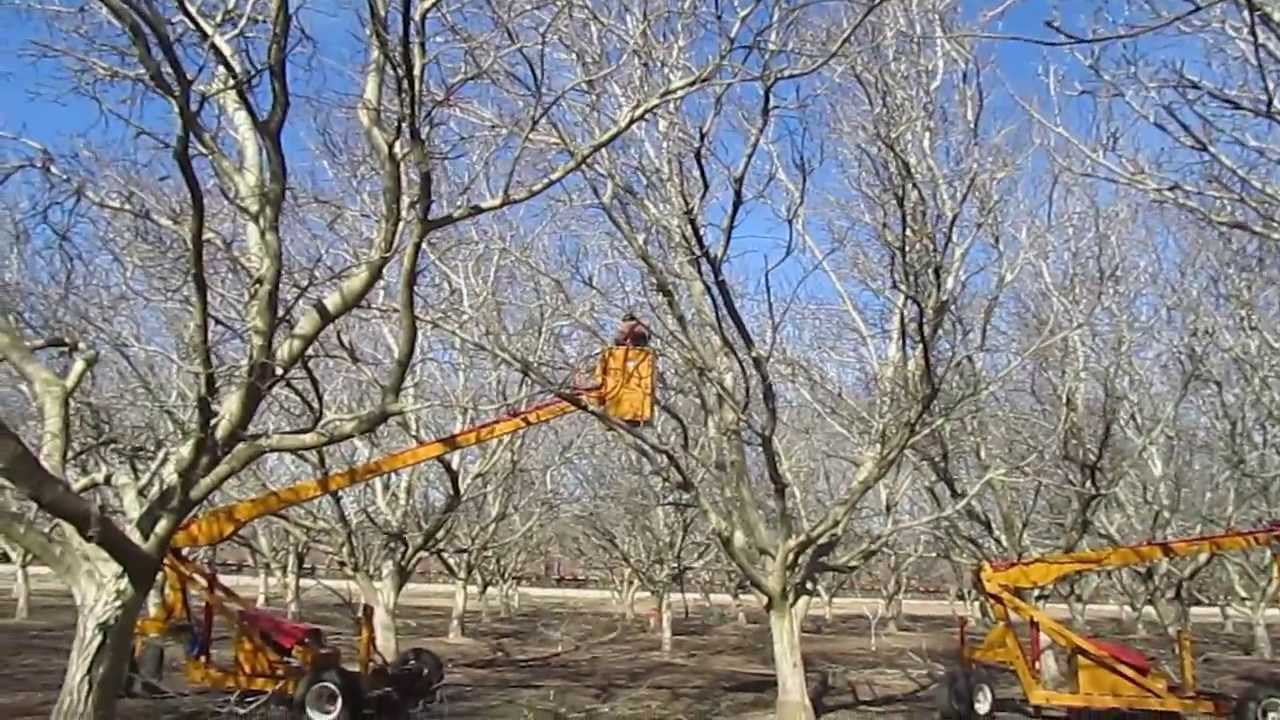

- Use sharp tools: When pruning a resistant walnut tree, it’s important to use sharp tools. Dull tools can cause damage to the branches and make pruning more difficult.
- Prune during the dormant season: The best time to prune a resistant walnut tree is during the dormant season, which is typically in late winter or early spring. Pruning during this time allows the tree to heal quickly and reduces the risk of disease or pest infestation.
- Remove dead or diseased branches: Start by removing any dead or diseased branches from the walnut tree. These branches can disrupt the flow of nutrients and contribute to the spread of diseases.
- Thin out the canopy: Thin out the canopy of the walnut tree by removing overcrowded or crossing branches. This helps increase air circulation and sunlight penetration, which improves overall tree health.
- Prune for structure: Consider the overall structure of the walnut tree when pruning. Remove any branches that are growing vertically or at narrow angles, as they can be weak and prone to breakage in strong winds.
- Prune to control size: If the walnut tree is getting too large, prune to control its size. Remove branches that are growing excessively or in undesirable directions to maintain the desired shape and height of the tree.
- Avoid heavy pruning: While it’s important to prune a resistant walnut tree, it’s also important to avoid heavy pruning. Walnut trees can be sensitive to excessive pruning and may not respond well to drastic cuts. Stick to lighter, strategic pruning for best results.
- Dispose of pruned branches properly: After pruning, be sure to dispose of the pruned branches properly. Remove them from the area to prevent disease or pest infestation, and dispose of them according to local regulations or guidelines.
By following these tips, you can successfully prune a resistant walnut tree and promote its overall health and productivity.
Common Mistakes to Avoid When Pruning Walnut Trees
Pruning walnut trees can be a delicate and intricate process, and there are several common mistakes that should be avoided in order to ensure the health and vitality of the tree. Here are some of the most common mistakes to avoid when pruning walnut trees:
- Over-Pruning: One of the most common mistakes is pruning too much at once. Over-pruning can put excessive stress on the tree and inhibit its ability to grow and produce walnuts. It is important to only remove dead, damaged, or diseased branches and to avoid removing more than 20-30% of the tree’s canopy in a single year.
- Improper Timing: Another mistake to avoid is pruning the walnut tree at the wrong time of year. Pruning should be done during the dormant season, before the tree starts to leaf out in the spring. Pruning during this time allows the tree to focus its energy on healing and recovering from the pruning wounds.
- Pruning Too Close to the Trunk: When pruning walnut trees, it is important to avoid making cuts too close to the trunk. Removing large branches too close to the trunk can create large wounds that are slow to heal and can leave the tree susceptible to disease and pests. It is generally recommended to make cuts just outside the branch collar, where the branch meets the trunk.
- Using Dull or Improper Tools: Using dull or improper pruning tools can make the pruning process more difficult and can cause unnecessary damage to the tree. It is important to use sharp, clean tools that are appropriate for the size of the branches being pruned. Tools such as pruning shears, loppers, and pruning saws should be regularly sharpened and cleaned to ensure clean cuts and minimize the risk of disease transmission.
- Ignoring Crossed or Rubbing Branches: Another common mistake is ignoring crossed or rubbing branches. These branches can cause damage to each other and create areas where pests and diseases can enter the tree. It is important to identify and remove any crossed or rubbing branches during pruning to maintain the overall health and structure of the tree.
- Not Consulting a Professional: Pruning walnut trees can be complex, and it is always a good idea to consult a professional arborist or horticulturist if you are unsure about how to properly prune your tree. They can provide guidance and ensure that the pruning is done correctly to promote the health and longevity of the tree.
Avoiding these common mistakes when pruning walnut trees can help ensure that the tree remains healthy, productive, and aesthetically pleasing. Remember to approach pruning with care, patience, and a commitment to the long-term health of the tree.
Question-answer:
Why is it necessary to prune a walnut tree?
Pruning a walnut tree is necessary to promote proper growth and development of the tree, as well as to maintain its health and productivity. It helps in removing dead or diseased branches, improves air circulation and light penetration to the inner parts of the tree, and enhances fruit production.
When is the best time to prune a walnut tree?
The best time to prune a walnut tree is during its dormant season, which is in late winter or early spring before the new growth begins. Pruning during this time minimizes stress on the tree and allows it to heal quickly. Avoid pruning during humid or rainy periods to prevent the spread of diseases.
Can I prune a walnut tree during summer?
Pruning a walnut tree during summer is not recommended as it can cause excessive stress to the tree and may result in sunburned branches. The tree is actively growing during this time, and pruning can disrupt its energy balance and lead to decreased fruit production. It is best to prune the tree during its dormant season.
How much of the tree should be pruned?
The amount of pruning required for a walnut tree depends on its age and condition. In general, it is recommended to remove dead, damaged, or diseased branches, as well as any crossing or rubbing branches. It is important to maintain the tree’s natural shape and avoid excessive pruning, as it can lead to stunted growth and reduced fruit production.
Can I use pruning sealant after pruning a walnut tree?
It is not necessary to use pruning sealant after pruning a walnut tree. Walnut trees are resistant to diseases and pests, and their healing ability is quite efficient. Applying pruning sealant may actually inhibit the tree’s natural healing process. It is best to leave the pruning wounds open, allowing them to dry and heal on their own.







